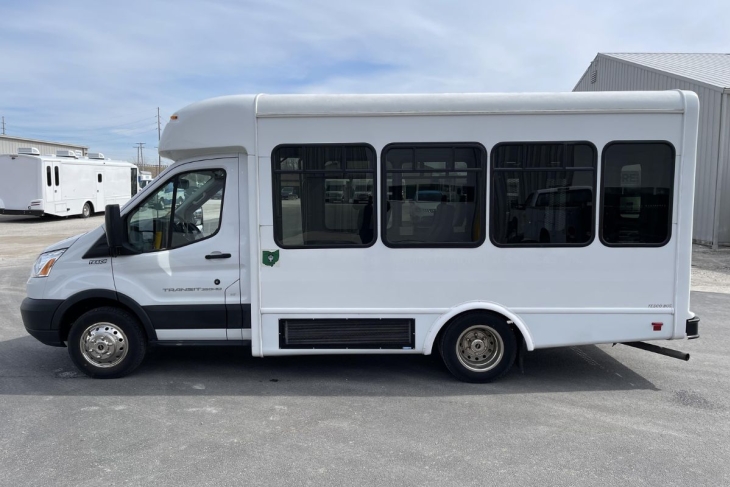For several years, thousands of charter, private, independent STEM, and district students across the state have suffered at the hands of a broken transportation system. Blame for the trouble has been laid at the feet of mediocre pay for drivers, burgeoning school choice, software and logistical woes, and insufficient funding.
The Ohio Department of Education and the General Assembly have been trying to solve the issue with legal mandates and fines. These are an appropriate first response, as they ensure that school districts—which are currently responsible for almost all student transportation—understand that the state is serious about making sure kids get to school safely, reliably, and on time. Unfortunately, districts have responded by tying those sanctions up in litigation that might just get resolved before the youngest students who are currently transportation-eligible reach high school. In the meantime, the wrecked system continues apace, while districts demand fewer service requirements and/or giant cash infusions from the state.
Kudos, then, to Ohio lawmakers who are offering some creative proposals to tackle the state’s transportation woes. Yes, the state budget bill does propose significantly increasing funding for student transportation, but it also contains numerous measures to make systems more modern, nimbler, and more responsive to the students and families who depend on them. Here are a few of those important proposals, which can be found in the current iteration of the state budget bill:
- ESC pilot program: The House budget created—and the Senate budget refined—plans for a pilot program to permit two Educational Service Centers (ESCs) serving Franklin and Montgomery Counties to provide transportation services for charter and private schools in their areas. The pilot would allow the ESCs to arrange all buses and drivers needed to serve students, collaborate with choice schools on their daily start and end times to build effective routes, and receive state funding for the costs associated with these efforts. By decoupling charter and private school transportation from districts—especially large ones with lots of school choice users—the state would allow districts to concentrate solely on the students enrolled in their buildings. Choice families will also benefit, as they would have a transportation system focused only on them and their needs—rather than being treated like second-class citizens by their district. The new proposal also requires ODE to issue a report at the end of the pilot, which, if it contains positive results, could influence all future transportation in the state.
- Making bus driver positions full-time jobs: Complaints about a shortage of bus drivers ignore the fact that the job is, generally, a part-time one with tricky hours. Low pay may be part of the equation, but so is the early-morning/late-afternoon schedule with the giant hole in the middle. Drivers could get second jobs to fill those intervening hours, but in today’s job market, it’s much easier to get one job that pays the same (or higher) and also provides more typical hours. The Senate proposes that ODE create a model that would support bus drivers who seek to work a full eight- to ten-hour shift “by doing either a morning or afternoon bus route and spend[ing] the remainder of the work day working as an educational aide or student monitor at a school.” This hiring model will help schools recruit more drivers and more hands to help with student and building needs during the day. Win-win.
- Flexibility in vehicle size: A House provision allows school districts to transport private school students using a van designed for nine passengers or less, rather than a traditional yellow bus, with appropriate safeguards for vehicle safety. The Senate budget extends this allowance to districts to transport charter students, as well. Moreover, the Senate opens the door wider to charter and private schools to begin providing their own transportation by allowing them to use vans in certain circumstances. Vans are more flexible to use on city streets and cost far less to buy, operate, and maintain than huge diesel buses. Perhaps most importantly, van drivers do not need a commercial drivers license (CDL) to operate them—a major barrier to recruiting bus drivers—thus opening the pool of potential drivers to adults with a traditional license, proper training, and a clean driving record.
- Changing payment in lieu of transportation: The Senate proposes tightening the rules around districts’ ability to determine which students are “impractical to transport.” Specifically, the bill requires districts to review an “impracticality” ruling at least every two years, or annually if a parent’s situation changes. They also propose boosting the maximum payment given to families if busing their students is deemed impractical from the current $1,077 to $2,500 per year (although the minimum payment is still determined in the same manner as current law: 50 percent of the average transportation expense, which was just $539 per student in FY23). If all else fails, and families must provide their own transportation to and from school every day, they would likely recoup more of their out-of-pocket costs under this proposal.
There are several more transportation proposals in the bill as it stands right now, both large and small, for which our legislators are to be commended. If all of them are enacted, families across Ohio should quickly see an enormous improvement in the availability, flexibility, and reliability of transportation services.




